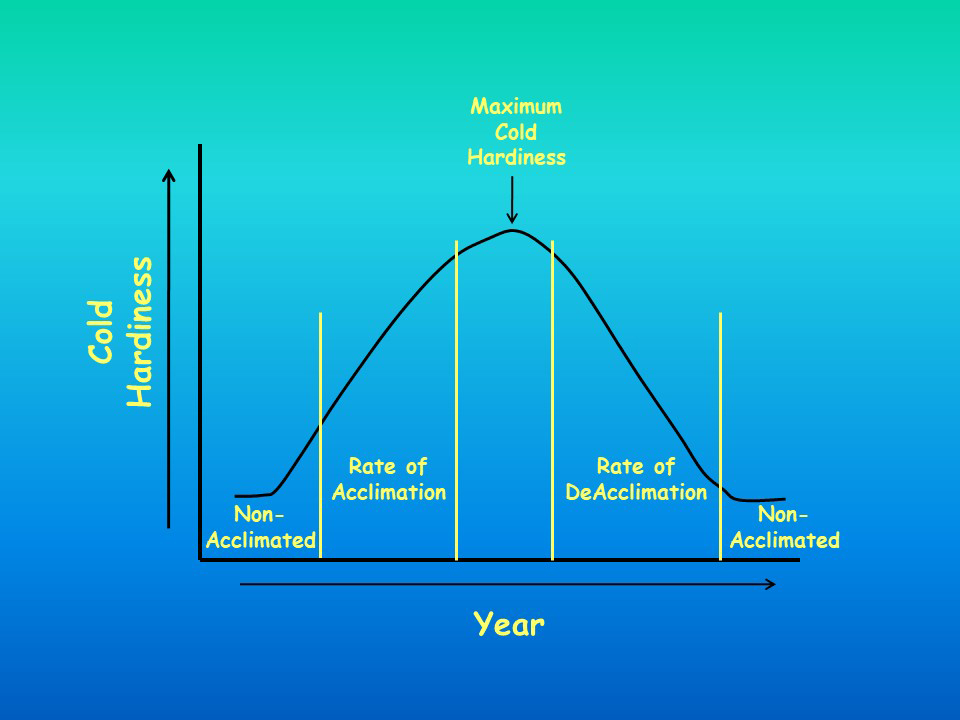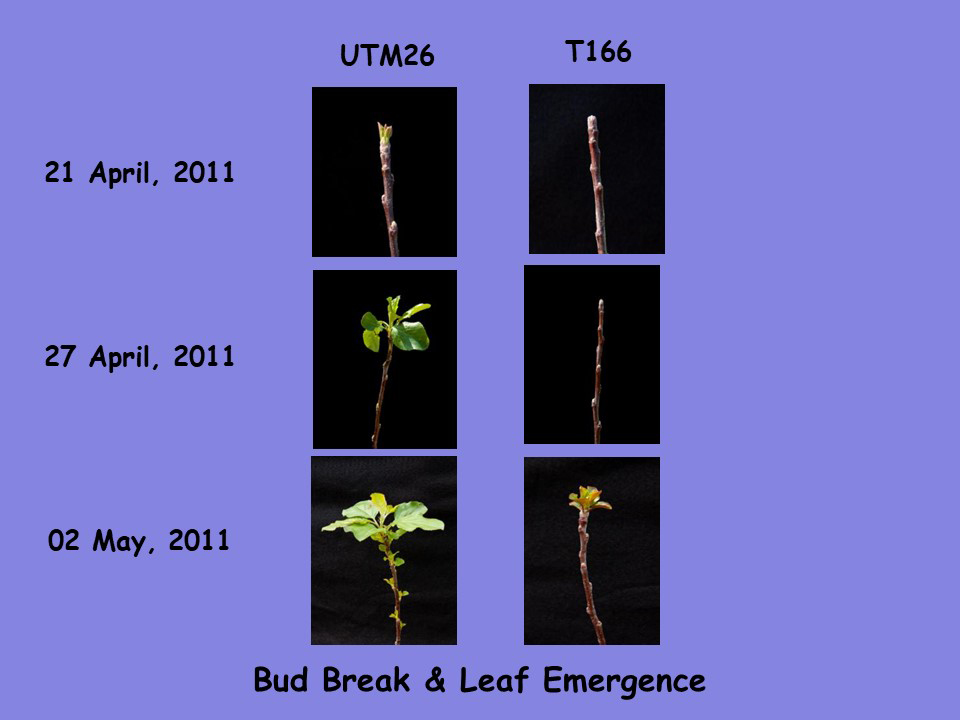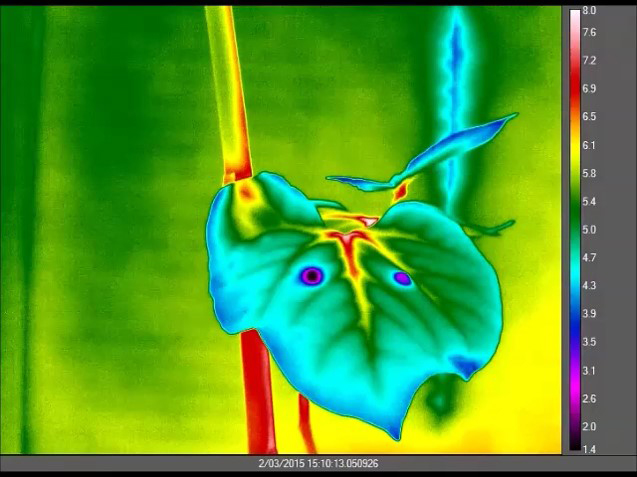Michael Wisniewski and David Livingston III from the U.S. Department of Agriculture – Agricultural Research Service (USDA-ARS) share their expert thoughts on the topic of plant cold hardiness in today’s changing climate
Since the late 1800’s, scientists have sought to understand how plants adapt to freezing temperatures and can survive the formation of ice within their tissues. Unlike animals, plants cannot remove themselves from an unfavourable environment and so have evolved mechanisms that allow them to adapt to temperature stress. Plant responses to freezing temperatures have been divided into tolerance and avoidance mechanisms. As the names suggest, one set of responses allows plants to escape exposure to ice (avoidance) while the other represents changes in the biochemistry and physiology of plants that allow them to tolerate the presence of ice within their tissues (tolerance).
An annual life cycle (i.e. going from seed to seed) and the ability to supercool (i.e. the ability to prevent ice from forming at temperatures well below 0 °C) are examples of avoidance mechanisms, while the accumulation of sugars, cryoprotective proteins, reduction in cellular water and changes in membrane structure, are examples of biochemical changes associated with freezing tolerance.

Tremendous gains have been made over the past 30 years in understanding the molecular biology of cold acclimation, the process that plants undergo in response to exposure to shorter daylength and cool temperatures in the fall that results in increased freezing tolerance.
Key genes, called transcription factors, have been discovered that are induced by low temperature and that regulate the expression of entire sets of cold-responsive (COR) genes. The development of rapid, low-cost DNA sequencing technologies has also allowed researchers to compare the genomes of plant species and genotypes within a plant species that differ in freezing tolerance.
Despite these advances, our ability to improve and regulate plant cold hardiness in a reliable manner has been challenging. Our understanding of the molecular biology of cold hardiness has revealed an ever-increasing level of complexity and genome-wide association studies (GWAS) have made evident a large number of genetic loci that contribute to the polygenic trait of cold hardiness. The challenge in the coming years will be to understand how to utilise the explosion of information we have gained about plant cold hardiness to address the critical problems facing agriculture, forestry and the natural environment due to rapid climate change, the loss of high-quality arable land and a growing world population.

Seasonal changes in cold hardiness can be divided into several phases (Fig. 1), each of which can be under separate genetic control and involve different mechanisms of adaptation. Other seasonal aspects of plant development, such as dormancy, growth and flowering are also genetically linked to cold acclimation and need to be taken into account. Finally, tolerance to an acute freezing stress (single freezing episode) vs. a chronic freezing stress (sustained exposure to freezing temperatures for a week or more) must be considered. Only by recognising this complexity, can significant advances in improving plant cold hardiness be made.

During the past ten years, unseasonably mild winters and erratic spring weather conditions resulting from ongoing climate change have resulted in spring freezing events that have caused catastrophic economic losses to farmers and are inducing shifts in the community structure of the natural environment. These events have raised the importance of finding ways of preventing plants from deacclimating (losing cold hardiness), prematurely losing dormancy and avoiding freezing. In fact, genetic transformation has shown that it is possible to produce plants with delayed dormancy (Fig. 2) and high-resolution infrared thermography has been used to elucidate how plants freeze and how ice propagates throughout the plant (Fig. 3). The latter technique has been especially useful in evaluating frost-protection products and evaluating the freezing response of newly developed genotypes.
The increasing occurrence of extreme weather events due to climate change is inducing severe episodes of freezing injury on our modern cultivars of crop plants, exposing them to temperature events for which they have not been bred to cope with, or for which native plants have not had time to adapt to through selection pressures. Only by recognising the complexity of cold hardiness as a polygenic trait, defined by both biophysical and biochemical adaptations that impact survival, can progress be made in improving cold hardiness in a changing climate. This will necessitate a strong commitment to conduct cold hardiness research.
Please note: this is a commercial profile
Michael Wisniewski
David Livingston III
U.S. Department of Agriculture –
Agricultural Research Service (USDA-ARS)
Tel: +1 304 7253 451











